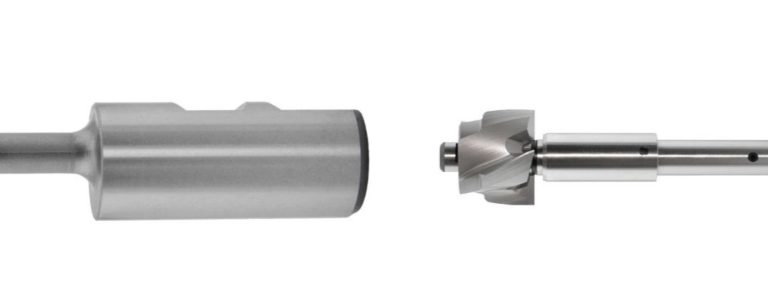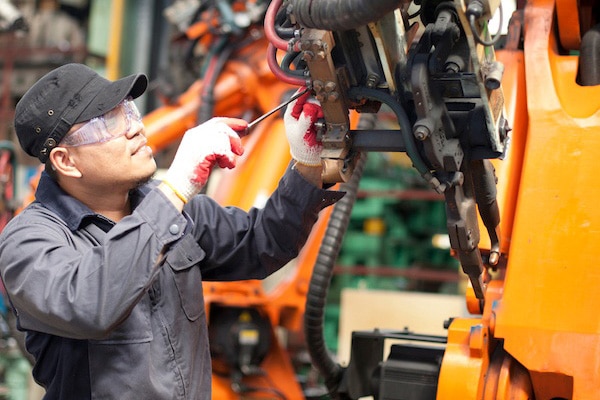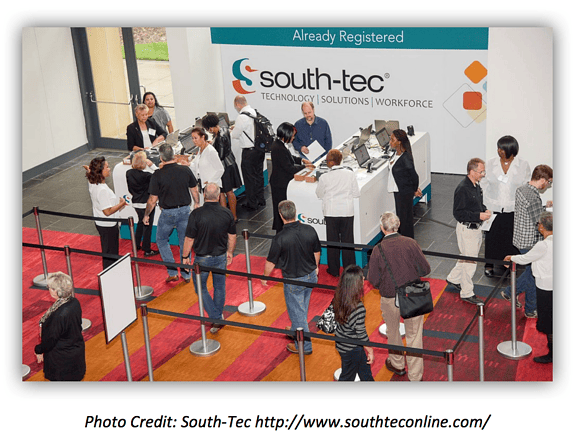How Today’s Trends Are Fueling Innovation for Automotive Manufacturers

With vehicle production on the rise, automotive manufacturers are feeling the impact. For many original equipment manufacturers (OEMs), this means investing in new machinery and/or improving facilities to increase productivity and efficiency. Meanwhile, changes in consumer demand, technological advancements and environmental regulations also challenge organizations to refocus their thinking for the future. In this blog, we’ll explore current trends in the automotive sector and discuss what they could mean for manufacturers.
Production & Spending: What the Numbers Say
Recent research suggests that vehicle production is at historic levels, a pattern that’s expected to continue in the next couple of years. According to the 2017 Metalworking Capital Spending Survey1, annual vehicle production in North America is predicted to top 18 million vehicles in 2017, 2018 and 2019, up from 17.55 million vehicles produced in 2016. The survey also offers insight on how production is expected to impact spending throughout the manufacturing supply chain:
- In 2017, facilities that serve the auto industry plan to spend $804 million on machine tools.
- Predictions on overall spending by automotive facilities can be broken out by machine type as follows:
- $370 million on machining centers
- $48 million on turning centers
- $103 million on grinding equipment
- The automotive industry is expected to outspend all other industries in machine tool purchases by an excess of about $319 million (followed by the aerospace industry).
Investing in Automation
Under pressure to produce parts more quickly and in large volumes, it’s likely that many auto manufacturing facilities will continue to adopt tooling solutions that help automate and streamline operations. The trend could also open the door to various forms of additive manufacturing, which entails manufacturing a part using 3D printing technology. Another opportunity for cost reduction and automation is 3D modeling and design automation software, which allows manufacturers to speed up design time and increase consistency in their designs.
Investing in automation goes beyond the automotive sector, too – in fact, according to another manufacturing survey conducted by the Boston Consulting Group, 75 percent of respondents said their companies planned to increase investments in automation or advanced manufacturing technologies over the next five years. ²
Responding to Non-Traditional Demand
Evolving consumer demand may also be a contributing factor for increased production. As consumers push for “non-traditional” types of cars, including those with green features and driverless technologies, auto makers may find their current vehicle line-ups are no longer sustainable. Even with the possibility of rolled-back mandates on fuel-efficiency from the new administration, the demand for electric and more efficient vehicles remains strong — with auto makers at the ready to move forward with green technologies to meet that demand.
Electric-car maker Tesla serves as a good example of changing consumer demands. Widely known for the self-driving technologies of its Model 3, Tesla nearly overtook industry giant Ford in market value in recent weeks – and came within striking distance of long-time market leader General Motors.3
What It All Means, For Now
Of course, there are no guarantees that vehicle production will hit its expected targets; no guarantee that demand will stay its course. But even as trends ripple throughout the automotive supply chain and redefine the focus of numerous auto makers and manufacturers, one thing’s the same: despite both internal and external influences, the manufacturing world continues to adjust, innovate and move forward.
If you would like to learn how automated tooling solutions like the Autofacer® can help you speed up high production volumes, try out this easy-to-use Cycle Time Calculator.
¹Gardner Business Intelligence (the research division of Gardner Business Media, publisher of Modern Machine Shop). 2017. Metalworking Capital Spending Survey. Retrieved from http://mms.epubxp.com/i/802599-apr-2017/90 [PDF].
²Belfiore, Michael. (2017, April). Automation Brings Manufacturing Back Home. Retrieved from http://www.automationworld.com.
³Dwyer, Colin. NPR Contributor. 2017, April 4. Riding Hopes For Model 3, Tesla Overtakes Ford in Market Value. Retrieved from www.npr.org.






